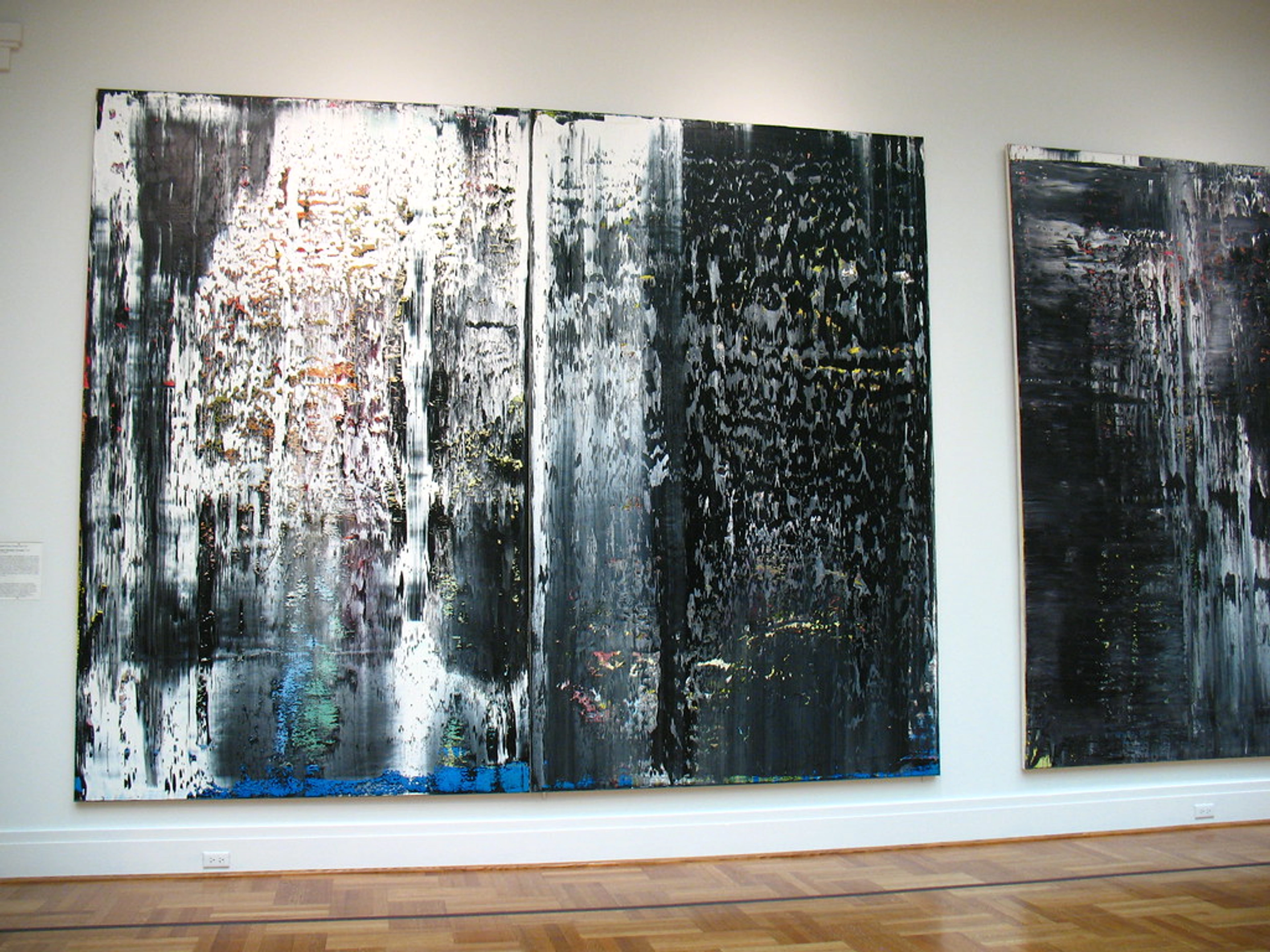
Daily Rituals for Abstract Art: Cultivating Creative Flow & Artistic Voice
Unlock your abstract painting potential with a candid look into my daily artistic practice. Discover how mindful observation, playful experimentation, and embracing unexpected moments cultivate creativity, prevent blocks, and connect you deeply to your unique artistic voice.
My Daily Rituals: Cultivating Creativity and Finding Inspiration for Abstract Art
Ah, inspiration. It's often romanticized as a lightning bolt, a sudden, divine spark that strikes only the chosen few. I used to fall for that, waiting anxiously for an idea to descend, usually accompanied by a wave of self-doubt. But if you're like me, waiting around for that mystical muse feels a lot like waiting for a specific pigeon to fly into your window with a tiny scroll. It's… inefficient, and frankly, a bit dusty. Over the years, I've come to realize that creativity isn't about waiting; it's about cultivating. It's about showing up, day after day, and building a fertile ground where ideas can actually take root and bloom. For me, that ground is paved with daily rituals, a blend of mental preparation and physical engagement designed to nurture the artistic spirit. And why abstraction? Because it allows me to bypass literal representation and delve directly into the emotional and energetic core of a subject, giving voice to the unseen. Representational art, while beautiful, often limits expression to the visible world; abstraction, conversely, opens a direct channel to inner landscapes and universal feelings, making it the perfect language for the soul's whispers.
The Myth of the Muse (and Why I Fired Mine)
I used to be a firm believer in the muse, envisioning a whimsical entity that would descend upon me, perhaps with a flurry of glitter and an undeniable urge to paint. Historically, many artists, particularly Romantic poets and painters, idealized this external force. Why? Perhaps because it offers a comforting illusion of effortless genius, or a convenient excuse for creative lulls. But there's another layer: a societal pressure for innate talent, the allure of the "tortured artist" trope, which suggests great art must emerge from dramatic, unbidden surges of genius. I'd sit, stare at a blank canvas, and think, "Surely, something will come to me if I just wait long enough." What usually came was laundry ideas, grocery lists, or the sudden, overwhelming urge to reorganize my spice rack. Not exactly groundbreaking abstract art. It was frustrating, and it led to a lot of lost creative time. It felt like I was perpetually holding my breath, waiting for a permission slip from the universe.
I learned that relying on sporadic bursts of inspiration is a recipe for inconsistency and, frankly, disappointment. True creative growth, the kind that evolves your unique artistic voice, comes from consistency, from the daily practice of engaging with your craft, even when you don't feel like it. It's less about a grand revelation and more about a persistent, quiet conversation with your materials and your inner world. If you're curious about how that voice evolves, I've written about finding my voice: the evolution of my abstract artistic style before, and for a deeper dive into the very concept of artistic inspiration and how it's often misunderstood, you might enjoy understanding the artist's muse.
My Morning Canvas: Setting the Mental Stage
My rituals aren't rigid rules etched in stone; they're more like gentle suggestions I offer myself each morning. They're about creating mental space and encouraging a receptive state, preparing my mind for the day's artistic explorations.
Silence and Observation
My day always starts quietly, usually with a cup of coffee and a moment of genuine stillness. No phone, no news, just… being. Sometimes I'll just look out the window, observing the play of light on a distant building, the way a branch casts a shadow, or the subtle shifting colors of the sky. It's remarkable how these fleeting moments, often dismissed as mundane, become the secret ingredients for my color palettes or textural experiments later on. For instance, the exact shade of bruised purple from a sunset on a brick wall once became the dominant cool tone in my 'Urban Echoes' series. Or I might notice the intricate, fractal-like patterns in a patch of frost on the windowpane, inspiring complex layering in a piece. It's a form of mindfulness that wakes up my artistic eye before my hands even touch a brush.
Journaling My Jumbles
After that quiet observation, I pick up a pen and a notebook. This isn't about elegant prose or profound insights; it's about getting everything out of my head – the anxieties, the half-baked ideas, the weird dreams from the night before, even the urgent need to buy more cat food. It's a raw, stream-of-consciousness dump, clearing the mental clutter before I attempt to create something beautiful. Think of it as hitting the 'delete all' button on your brain's desktop. This 'mental housekeeping' clears the cache, making space for new, focused thoughts. Sometimes, a tiny phrase or a bizarre image will jump out – perhaps "a distorted shadow of a bicycle wheel" or "the color of forgotten promises" – an unexpected kernel of an idea that might later resurface in an artwork. Some prompts I find useful are simply "What's on my mind right now?" or "If my thoughts were colors, what would they look like?" Once, a frantic note about needing cat food was scrawled next to a dream fragment about "floating geometric shapes," and that juxtaposition of the mundane and the abstract sparked a whole new series exploring the tension between daily life and artistic vision. This raw, unfiltered content often becomes the initial spark; the "distorted shadow of a bicycle wheel" might directly inform a particular line quality or a fragmented compositional element in a painting, translating the mental jumble into a visual language. It's messy, it's often nonsensical, but it's incredibly freeing, almost like finding your reflection in abstract art.

The "Pre-Studio" Transition
Before I even step into my studio, there's usually a short walk. It's my personal portal, a way to clear my head, get my blood flowing, and mentally transition from the everyday world to the creative space. The feeling is like shedding a skin, letting go of mundane concerns with each step. Sometimes I listen to music that inspires me – perhaps ambient soundscapes for calm, or something with a driving rhythm to energize – sometimes just the sounds of the city. This simple act of movement helps me hit a mental 'mute' button on external distractions, allowing my inner landscape to come into focus, preparing my brain to shift gears and embrace the artistic flow.
In the Studio: Embracing the Flow, Not Forcing It
Once I'm in the studio, the rituals shift from mental preparation to physical engagement with the materials. This space, a beautiful mess of paints, brushes, and canvases, is where the internal dialogue becomes external, taking shape on the canvas.
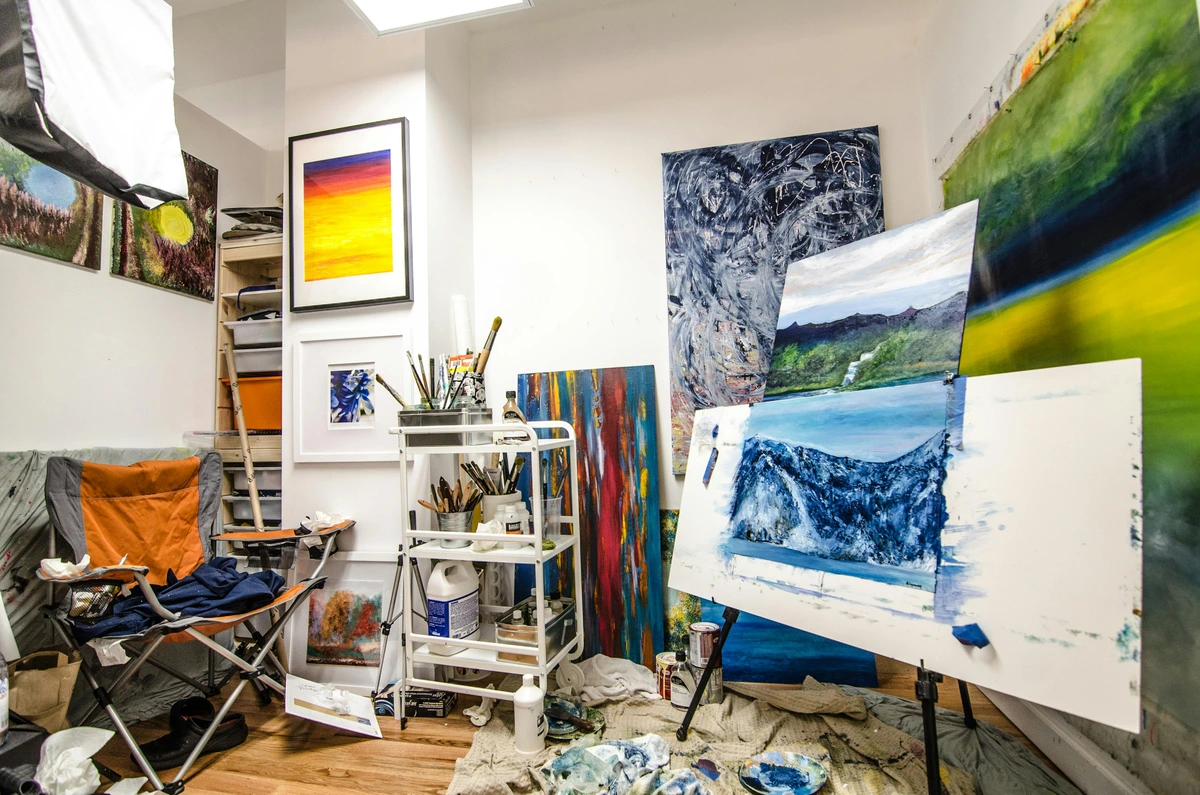
Warm-up Woes (and Wins)
I never jump straight into a major piece. That's like expecting a concert pianist to launch into a concerto without a single scale. My warm-up involves smaller canvases or paper, just playing with color, line, and texture. It's about getting comfortable with the materials, making ugly marks without judgment, and shaking off the fear of the blank surface. It's about letting go of perfectionism, allowing intuition to lead. I might spend 10 minutes just making random marks with a charcoal stick, focusing on the pressure and the sound it makes, or I'll lay down broad washes of complementary colors on a small canvas, not aiming for anything in particular, just to see how they interact. Sometimes I scribble aimlessly, or try out a new brush with a color I rarely use, just to see what happens. This reminds me a lot of my intuitive approach to starting an abstract painting.
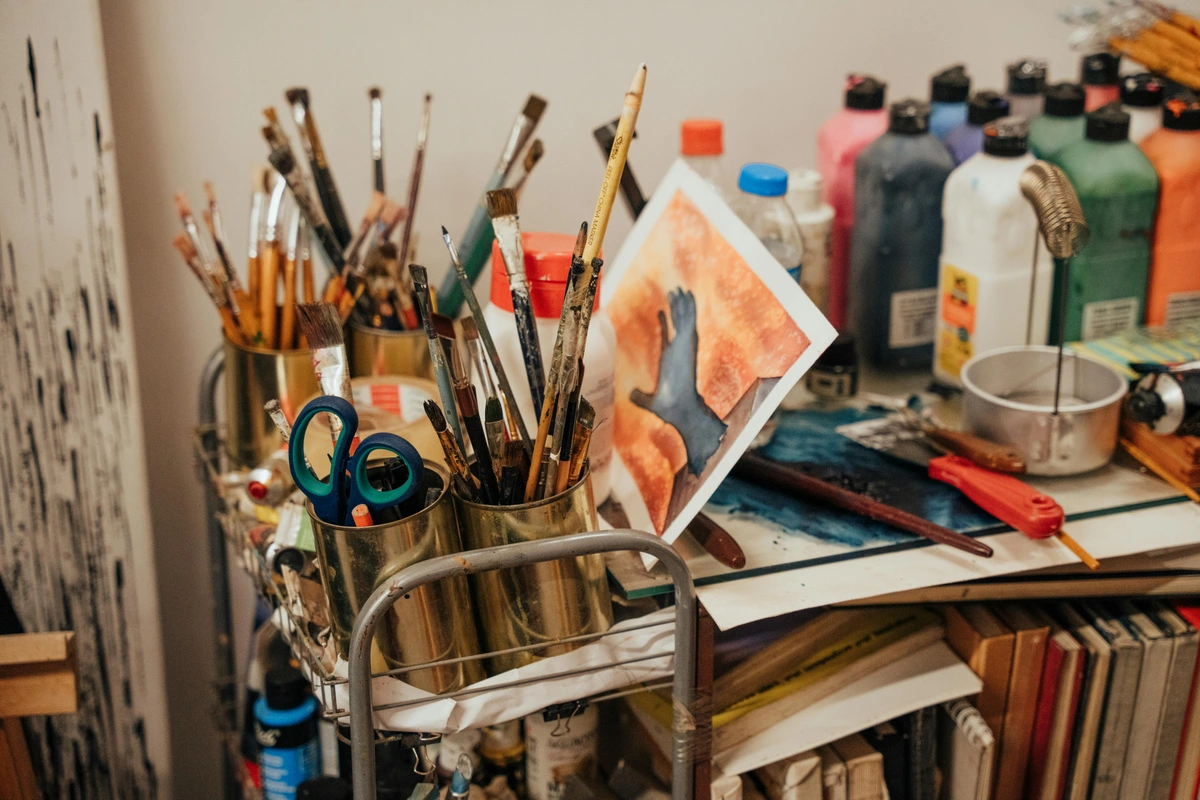
Sensory Immersion
My studio is a sensory playground. Music is almost always on – sometimes classical, sometimes ambient, sometimes something with a driving rhythm to energize – sometimes just the sounds of the city. The smell of paint, the feel of the brush or palette knife against the canvas – I try to be fully present in these sensations. The cool, smooth glide of a palette knife loaded with heavy impasto, or the soft give of a brush loaded with fluid acrylics – these tactile experiences ground me, connecting me directly to the creation. There's a satisfying thwack as the paint hits the canvas, a quiet thrill in the resistance. This deep engagement helps silence the inner critic and allows my subconscious to guide my hand, transforming raw feeling into form. If you're interested in the tactile side of things, I've shared my thoughts on my palette knife, my voice: a personal guide to creating texture and emotion in abstract art. Speaking of sensory input, my studio playlist fuels my abstract creations quite a bit.

The Joy of Play
This is where the magic happens. After warming up, I allow myself to play. There's no fixed outcome in mind, no pressure. It's pure, unadulterated creative freedom, where the canvas becomes my playground. This might involve deliberately mixing colors I wouldn't normally put together, or using a tool in an unconventional way, like applying paint with the edge of a discarded credit card, just to see what kind of mark it makes. It's about experimenting with color combinations, seeing how different strokes interact, or adding layers just to see what happens. This playful approach keeps the work fresh and prevents me from falling into predictable patterns, really embracing the art of intuitive painting.
![]()
Embracing the Unexpected: The Art of the 'Happy Accident'
In the dance between intention and spontaneity, sometimes the most profound moments arise from what might initially seem like a mistake. A stray drip, an unexpected color bleed, a texture that wasn't planned – these aren't errors to be corrected, but rather invitations to pivot, to explore a new direction. Learning to see these 'happy accidents' not as flaws but as serendipitous gifts is a cornerstone of my abstract practice. They often become the focal point, the unexpected path that transforms a good painting into a truly compelling one. For instance, a small, accidental tear in the paper during a mixed media piece once led me to intentionally incorporate collage and layered transparency into the final work, adding a depth and vulnerability I hadn't planned. Another time, a clumsy spill of iridescent medium across a freshly painted, muted background created an ethereal, unplanned shimmer that became the central 'light source' of the piece, fundamentally shifting my approach, much like embracing the language of layers and intuition.

Stepping Back
Equally important as creating is stepping away. I often physically leave the studio for a coffee break, or sometimes even for an entire day. When I return, my eyes are fresh, and I can see the work with new perspective, noticing areas that need refining or discovering unexpected harmonies. Once, I was wrestling with a composition that felt 'stuck,' a sea of muted blues and greys. I left it for a full day, spent time in nature, and when I returned, I immediately saw that a vibrant pop of unexpected yellow was needed in one corner to balance the weight, transforming the piece entirely. This act of physical and mental detachment is almost as vital as the act of creation itself, offering clarity and allowing the artwork to 'breathe' before its next stage. It's amazing what a little distance can do for an abstract composition.
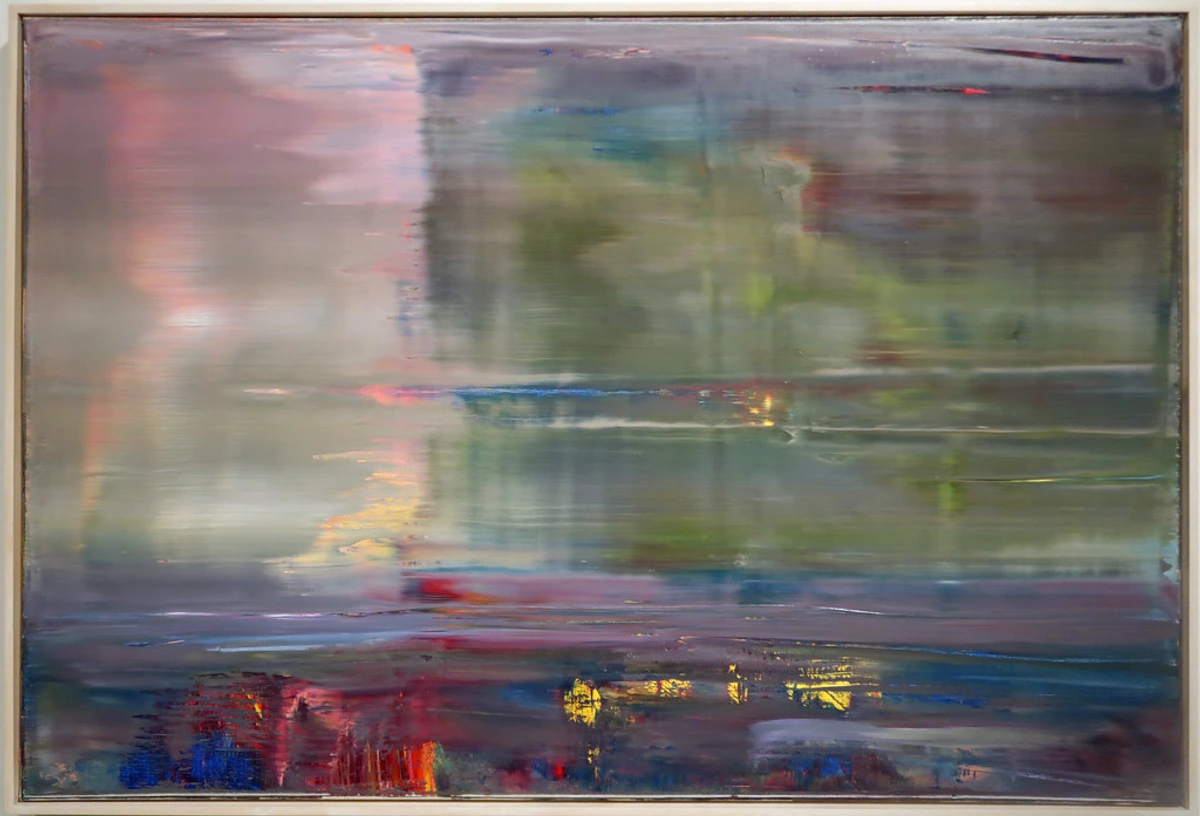
The Silent Benefits: More Than Just Art
While the primary goal of these rituals is to spark creativity, their benefits extend far beyond the canvas. This consistent, mindful engagement with my inner world provides a profound sense of calm, reducing the ambient hum of daily stress. It sharpens my focus, allowing me to enter a state of flow where hours can pass unnoticed, diving deeper into the artistic process without distraction. There's a quiet sense of accomplishment that comes from showing up for your art, a foundational resilience that helps navigate inevitable creative blocks and setbacks. It's a holistic practice that nourishes the soul as much as it cultivates the art.
The Artist's Toolkit: Materials as Muses
Beyond the mental rituals and studio flow, my choice of materials itself becomes an integral part of my creative cultivation. The very feel and behavior of different paints and tools can guide my hand and spark unexpected directions. The buttery resistance of heavy body acrylics (like Golden or Liquitex) when applied with a palette knife lends itself to thick, expressive impasto, inviting bold, confident strokes that almost demand attention. Conversely, the fluid nature of inks (such as Ecoline) encourages spontaneous drips and washes, pulling me towards more ephemeral and unpredictable forms. I find certain brushes inherently lead to specific marks – a wide flat brush for bold, decisive sweeps, a fine rigger for delicate, wandering lines. Sometimes, the decision to work on a rough-textured canvas versus a smooth panel dictates the entire energy of a piece before I even begin; the rough surface might call for more aggressive scraping, while the smooth invites subtle glazing. It’s not just about what the material can do, but what it wants to do, and allowing that dialogue to unfold. This interplay transforms my toolkit from mere instruments into active collaborators, each inviting a unique form of expression, sometimes leading me to explore what is impasto painting or the language of layers.
Beyond the Brush: Everyday Inspirations and Expanding Horizons
Inspiration isn't confined to the studio walls. It's everywhere, if you know how to look, and the abstract language of life often speaks loudest in the subtle details.
Nature's Abstract Masterpieces
I'm constantly drawn to the abstract beauty in nature: the intricate patterns of tree bark, the swirling clouds, the way light filters through leaves, or the textures of weathered stone. These subtle details, often overlooked, become a rich source of visual information for my abstract works. For example, the iridescent shimmer on a beetle's wing, with its unexpected shifts in color, directly influenced the layered, metallic glazes in my 'Chroma Shift' series. But also consider the complex, branching patterns of frost on a windowpane, the rhythmic dance of kelp swaying underwater, or the unexpected color shifts within a tidal pool – these micro-observations become macro-inspirations for line, form, and palette. It's about seeing beyond the literal and appreciating the inherent design, a process I've explored further in finding abstraction in the everyday. Sometimes, even the psychology of green in nature finds its way into my compositions.
Human Connections and Conversations
Sometimes, the most profound inspirations come from simple human interaction. A shared story, a deep conversation, or even observing the subtle emotions on someone's face can spark an idea. These experiences translate into the emotional depth and narrative layers within my abstract pieces. For instance, a friend's recounting of a difficult personal struggle, filled with metaphors of 'cracks and resilience,' once led me to explore fractured lines and layered textures in my work, aiming to visually represent that emotional landscape. The result was a series where a vibrant underpainting would peek through deliberately distressed upper layers, symbolizing strength emerging from vulnerability. Another time, a conversation about the fleeting nature of memory, filled with images of "fading echoes" and "overlapping whispers," inspired a series where translucent glazes were built up over obscured marks, creating a sense of veiled history and shifting presence. Art, after all, is a dialogue, and life is full of dialogues. It’s about why I paint abstract.
Learning and Exploring
I'm a perpetual student. Visiting museums, pouring over art books, and exploring the works of other artists (whether contemporary or historical) is crucial. It's not about copying, but about understanding different perspectives, techniques, and the ongoing conversation of art history. Consider visiting a retrospective of a master like Helen Frankenthaler or delving into contemporary abstract expressionism at a local gallery to see how others navigate their creative paths. I find the energetic compositions of Joan Mitchell particularly enlightening; her bold, uninhibited brushstrokes taught me the power of gestural marks to convey raw emotion. Similarly, the thoughtful layers of Mark Rothko's color field paintings showed me how subtle shifts in tone and saturation can create profound depth and emotional resonance, transforming a flat surface into an immersive experience. The learning comes not just from observation, but from asking: How did they achieve that effect? What emotion does this evoke? How does this expand my own visual vocabulary? If you're ever near, do visit my museum in 's-Hertogenbosch for a physical dive into art. And if you're keen to understand the deeper meanings in non-representational works, you might find my guide on decoding abstract art: a guide to finding meaning in non-representational works insightful, or delve into the evolution of abstract art for historical context.
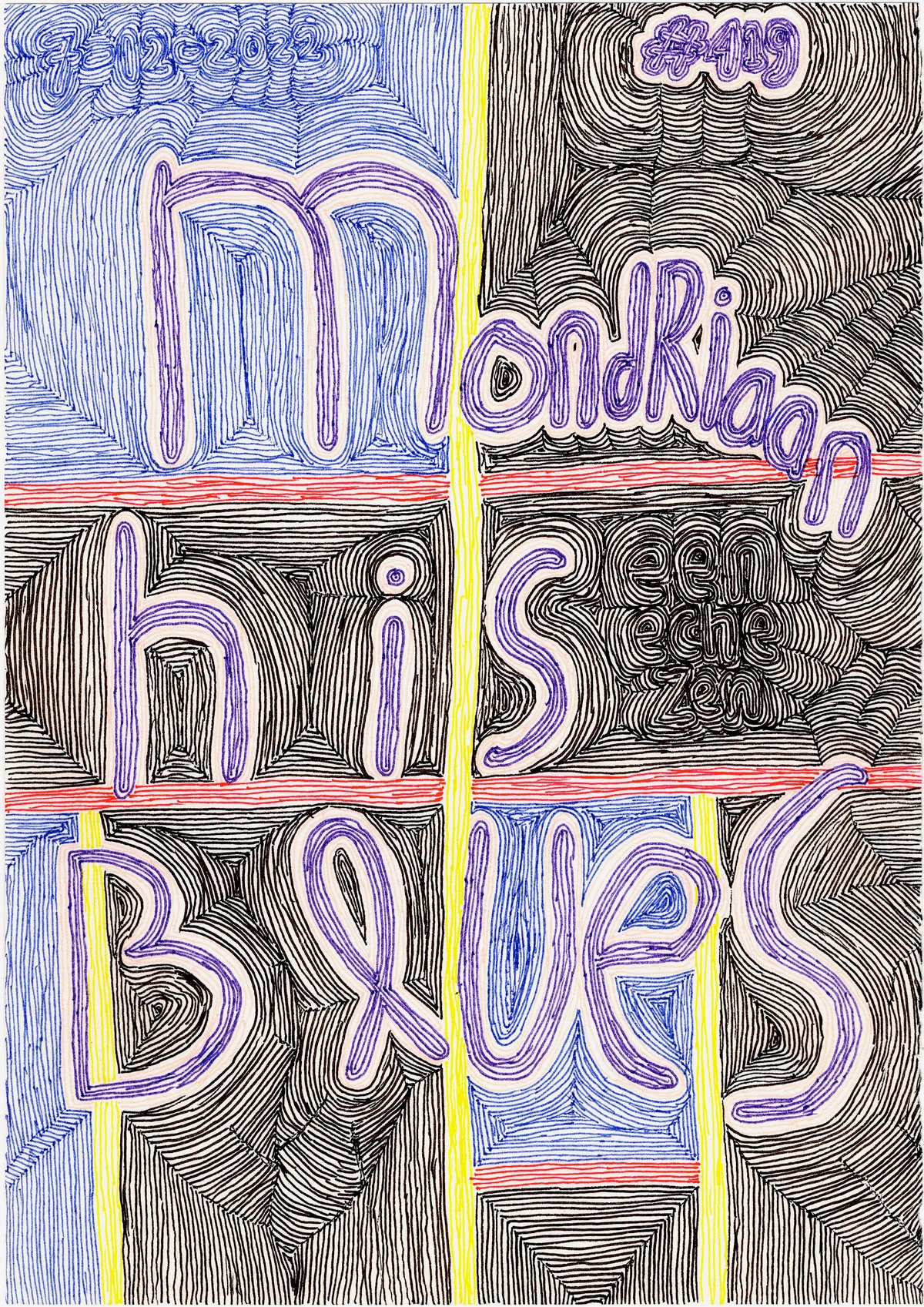
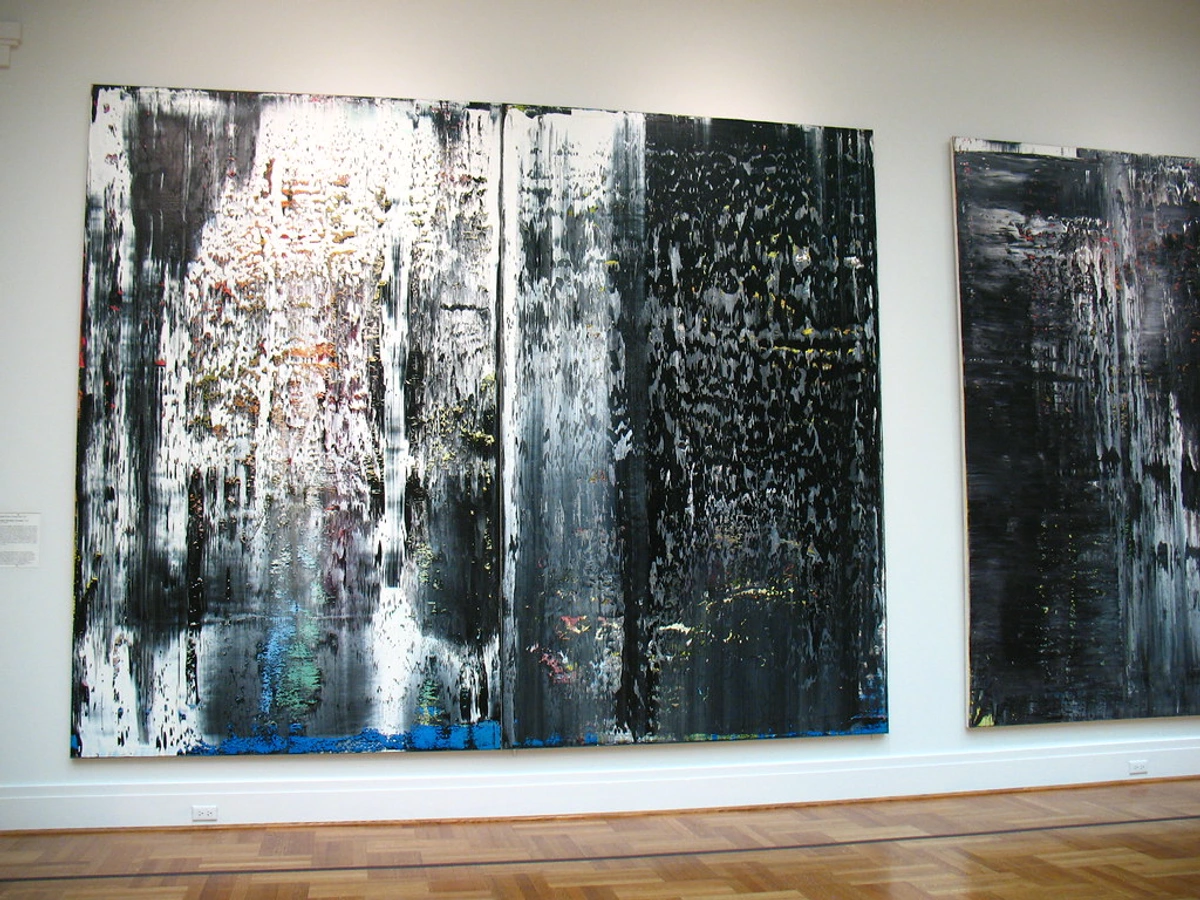
The Imperfection of Routine (and Why That's Okay)
Let's be real: life happens. There are days when the rituals go out the window, when I'm tired, distracted, or just plain lazy and want to binge-watch a series. And you know what? That's perfectly fine. The goal isn't rigid adherence; it's consistency over time. If I miss a day, I don't beat myself up. I just pick it up again the next day, perhaps with a slightly sheepish grin and an extra strong cup of coffee. The key is self-kindness. Remember, creative practice is a marathon, not a sprint where every step must be perfect. My art, like life, embraces these imperfections, finding beauty in the unplanned mark or the subtle shift, much like my abstract art collection often celebrates the unexpected.
Key Takeaways: Your Creative Compass
To distill it all, here are the core principles I lean on for cultivating a vibrant creative life:
Ritual | Purpose | My Experience/Example |
|---|---|---|
| Cultivation | Inspiration is an outcome of effort. | Consistently showing up, even when the muse is AWOL. |
| Mindful Observation | Awaken the artistic eye. | Noticing the nuanced purple of a sunset on a brick wall. |
| Mental Housekeeping | Clear mental clutter for new ideas. | Journaling anxieties; prompts like "What's on my mind?" to clear brain's cache. |
| Physical Transition | Shift from daily to creative focus. | A short walk to mentally 'mute' external distractions. |
| Playful Engagement | Embrace experimentation without judgment. | Making ugly marks, using unconventional tools, letting intuition lead. |
| Embrace 'Happy Accidents' | See errors as opportunities. | An accidental tear led to intentional collage; a spill became a light source. |
| Strategic Detachment | Gain fresh perspective. | Stepping away for a day; returning to see a missing yellow pop in a composition. |
| Material Dialogue | Let tools guide new directions. | The buttery resistance of acrylics suggesting bold impasto. |
| Broaden Horizons | Find inspiration everywhere. | Observing fractal patterns in nature; deep conversations; studying other masters. |
| Practice Self-Kindness | Consistency trumps perfection. | Missing a day is okay; just pick it up tomorrow with an extra strong coffee. |
FAQ: Your Creative Queries Answered
How long should my daily ritual be?
There's no magic number. Even 15-30 minutes of focused creative engagement or preparation can make a difference. The important thing is to make it a consistent habit you can realistically maintain.
What if I miss a day?
Don't fret! Consistency is about showing up most of the time, not every single time. Acknowledge it, and simply restart your ritual the next day. Guilt is a creativity killer, so be kind to yourself.
Can these rituals help with artist's block?
Absolutely. By creating a habit of showing up and consistently engaging with your materials, you often prevent the onset of artist's block by fostering a continuous creative flow. The routine itself becomes a pathway through resistance, offering a gentle nudge into the creative process, even when ideas seem elusive. When facing a particularly stubborn block, I often find that switching mediums (e.g., from oil to watercolor) or focusing on a purely textural exercise (like making different marks with charcoal) can be incredibly effective, shifting the pressure from "creating a masterpiece" to simply "exploring." For more insights, I've shared how I navigate artist's block in my studio.
How do you translate abstract ideas or emotions into your art?
This is where the magic of abstract art truly unfolds! It starts with deep listening – to my inner self, to observations, to conversations. I don't try to literalize these feelings. Instead, I explore them through color, texture, line, and composition. This process often begins with the 'Journaling My Jumbles' phase, where a seemingly random thought like 'the weight of unspoken words' might lead me to select keywords or visual fragments from my notes, using them as a starting point for my warm-up exercises. If an emotion feels vibrant, I might reach for bold, energetic strokes and bright hues, perhaps exploring the emotional language of color in abstract art. If it's contemplative, I might use muted tones and flowing, interconnected lines. It's less about depicting and more about embodying the essence of that idea or feeling within the visual language of abstraction. Learning about the power of color in abstract art or the art of mark-making might deepen your understanding.
What if I'm feeling completely uninspired, even after my rituals?
Even with consistent rituals, there are days when the well feels dry. On such days, I don't force it. Instead, I shift my focus from creation to input. This might mean proactively visiting a museum, watching a documentary about a different art form, reading a book, or simply taking a long walk with no artistic agenda. Sometimes, the best way to invite inspiration back is to stop looking for it directly and instead feed your mind with new experiences and perspectives. It's like letting the subconscious simmer until a new flavor emerges.
Ready to start your own creative journey? Remember, the path is unique to you. Find what resonates, build your own rhythm, and most importantly, enjoy the process. What small ritual will you cultivate today? Perhaps you'll find a piece of your own story in my art for sale.
Conclusion: The Cultivated Canvas of Life
My journey from waiting for a mythical muse to cultivating a daily practice has transformed not just my art, but my entire approach to life. It's a testament to the power of showing up, consistently, with an open mind and a playful spirit. These rituals—from silent observation to studio play, embracing happy accidents, letting materials guide me, and stepping back—are the fertile ground where abstract ideas take root, emotional depth finds its voice, and unexpected beauty emerges. Creativity, I've discovered, isn't a gift bestowed upon the few, but a muscle strengthened by intentional practice, day after day. So, as you embark on your own artistic explorations, remember: the most profound inspiration often lies not in waiting, but in the quiet, persistent rhythm of your own cultivated canvas. Experiment, iterate, and discover what daily rhythm allows your unique artistic voice to flourish.




